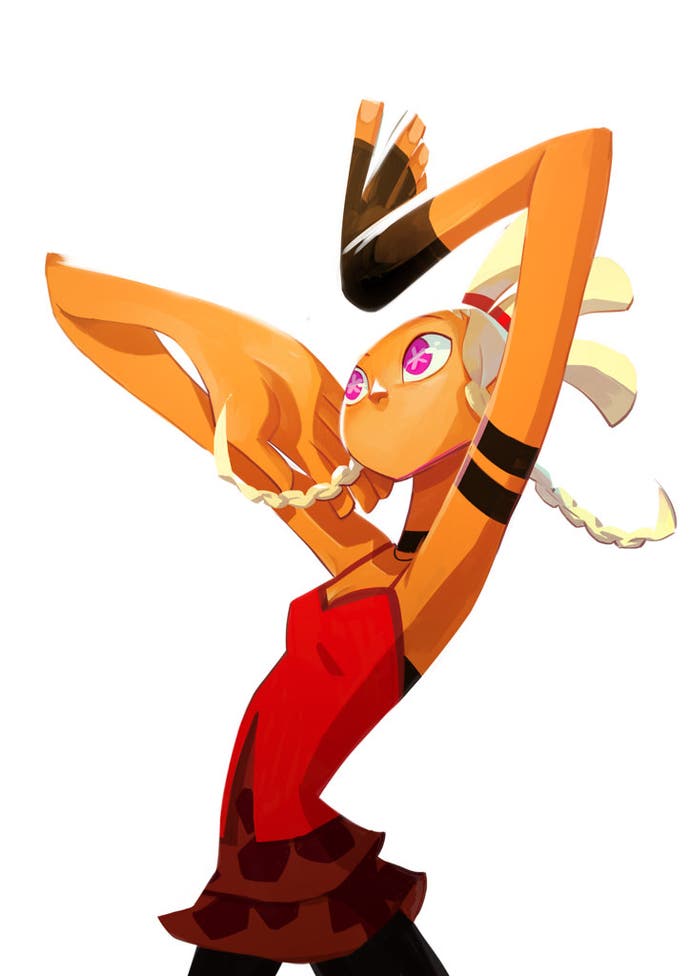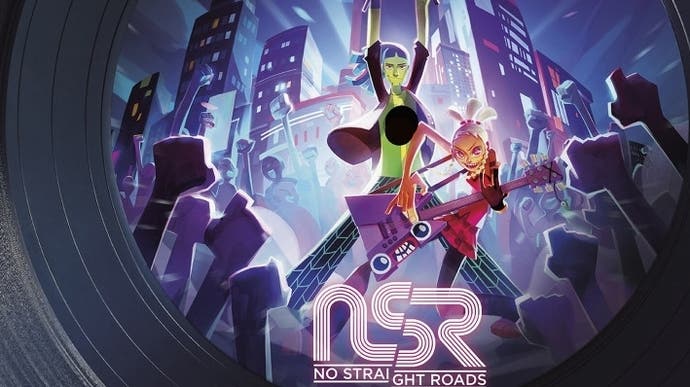Final Fantasy 15, roti canai and the new PS4 game that harks back to rhythm action greats
Let it ringgit.
Arguing about the best Final Fantasy is a risky, often fiery business - they're a nebulous group of games, each offshoot and strand having devotees and detractors in equal number - so let's argue about something a bit more straightforward instead. Where can you find the best cuisine in the world? There's only one real answer: Malaysia. It's not even up for debate.
You'd know that if you've ever sampled the food, of course. Achat! Assam pedas! Laksa! Nasi lemak! Rendang! Or that perennial favourite, roti canai; a dish that consists of a flatbread whose dough is rolled and re-rolled so that when it's fried it's deliciously flaky and soft, served alongside a curry. It's an Indian dish that's been given a flourish in its journey to Malaysia; like so much of the cuisine there, it blends aspects of different nearby cuisines to create something proudly Malaysian.
Still, it was something of a surprise to see roti canai make a cameo as a dish in Final Fantasy 15, appearing as part of its succession of exquisitely-modelled food as it was served up in the in-game city of Lestalum. That cameo came courtesy of one proud Malaysian on the team who found himself heading up the design of Final Fantasy 15's cities - a key part of the game, given their absence in the last mainline entry, Final Fantasy 13.
"They were virtually non-existent, right!," Wan Hazmer, who now heads up his own studio, tells me as we talk about how he got Malaysian food into Final Fantasy 15. "At first I didn't want to put in these things - Lestalum was supposed to be a city that seems poor at first, but is thriving on a certain economy which in this case was an electric generator. We based the architecture on Cuban architecture, the markets were all Middle Eastern - and they wanted to know what's the most perfect food culture. And I was like, hello! Malaysia!"

It's a detail I adore in Final Fantasy, and not just because it's a reminder of such a delicious dish - it speaks to the personality that's baked into this, one of the most divisive of entries into Square Enix' long-running series. I think that, no matter where you stand on it - and, personally speaking, I loved it - you can agree it's a game with an abundance of character, and one of the great achievements of its director, Hajime Tabata, was allowing the personality of his staff's creators shine through in these incidental touches.
"Well, Tabata-san, he was very good at assigning tasks to people," says Hazmer. "We have this term which means making sure that person truly enjoys what they're doing, assigning the right jobs to the right people. So for example - we had a game designer on the vehicle team. He was a truck driver for seven years, studied CG for six months and that's it, he joined Square Enix. We had really, really crazy people like that. The art director - the game was so big, we needed three art directors - one of them, he's crazy about animals. He knows the bone structures of a lot of animals, can go to Okinawa and just grab a snake on the road and know exactly what it is - he was in charge of the monsters in the game."
Hazmer himself was working on Final Fantasy 15 for seven years - indeed, before it even was Final Fantasy 15. "I went for the orientation at the company for the first time, this lengthy thing then asked what I'd be working on," he says of his first day at work - and his first professional job in the games industry. "They said it was Final Fantasy Versus 13, and I was like 'sorry, what - did you just say Versus 13?' I thought I'd be working on a mobile game or something! It was such a surprise."

The best part of a decade later - and several high profile changes to the game itself, of course - and Hazmer looks back on the whole thing fondly. "It was a fantastic experience, you know! I got to work with people who made my favourite Final Fantasy - 7 - with the art director and Nomura-san, Tabata-san had worked on Crisis Core. They're wonderful directors. Then to become lead game designer for such a big project, that was such an honour. And a lot of pressure, of course!"
After all that, though, you can't blame Hazmer for heading off to do something different - a decision he'd made some five years before finishing up work on Final Fantasy 15, letting his team know his plan and then seeing it through. Hazmer moved back to Kuala Lumpur, setting up a new studio - Metronomik - to explore music-based games and to help put Malaysian talent on a global platform.
"The original impulse was my belief that Malaysians have talent," Hazmer says. "Do you know any original Malaysian IP?" he asks - and quite honestly, even though I visit the country once a year to spend time with my partner's family, all I really know is that it's a prime location for outsourcing, with the likes of Codemasters having studios in the capital to help with asset creation among other things.
"Malaysia has so much to show in terms of culture. I wanted to go back with the know-how of FF15, then try to prove ourselves with our first game, and then from there - I'm an advisor for four universities - use our experience. Malaysians have two problems - we're either too proud of our culture, or not proud enough. Some people think that Malaysia is more local. In fact, the word local in Malaysia - people use it to mean low quality. Then there's the other side, where people think that Malaysian culture is so good, if you put just one hint in there, everyone's going to like it. You should put it in because you're proud of it, not just because of Malaysian culture."
Hazmer set up the studio with his cousin Daim Dziauddin - another graduate of the Japanese development scene, having worked on Street Fighter 5 - and their first project is a distillation of everything they loved playing together while growing up in Malaysia. No Straight Roads is a rhythm action platformer, with Tim Schafer humour served up with some late 90s Sega style. It's part Psychonauts, part Jet Set Radio, part Space Channel 5, and it all makes for quite the intoxicating mix.
Work on the project only started towards the tail-end of 2017, and No Straight Roads is fast approaching release - a development cycle that's a far cry from the protracted one Hazmer experienced on Final Fantasy 15. It's a cycle the studio wants to commit to for its future projects, too.
"It's all about employee motivation, you know," he says. "You've noticed our logo? It's a metronome with a heart. It's not because we want to make music-based games - we also want to manage your pace of life. We don't do overtime, at all. We want to make sure we consistently make games. When we had a demo for TGS, we did it in nine months. It's about making games quickly, which is very motivating. We have a sprint meeting every two weeks, we change goals every two weeks, there's a very flat hierarchy."
Hazmer wants to give back a little, too - part of his plans involve opening up a school in Malaysia - and with No Straight Roads it's also about serving up something that's proudly Malaysian to the global market. As much as there are strands of Dreamcast classics and Tim Schafer's games in what I played, it's the Malaysian teams' flourishes that really makes it stand out - a certain buoyancy and energy in how it plays out, the colloquial dialect of Malaysian-English that the characters speak - bringing the local aspects of Malaysian culture to a worldwide audience is what makes it unique.


